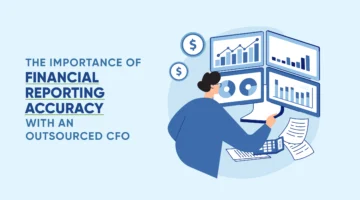5 Steps for Improving Profitability
Your company may be raking in profit, but that doesn’t necessarily mean your company is profitable. Profit is the amount of revenue a company brings in minus the company’s expenses. In contrast, a company’s profitability is a relative statistic, based on a company’s profit in relation to its size and efficiency. A company can earn a profit and not be considered profitable.
If your company is not profitable, it will not be successful in the long-term. Without a strong profitability index, your company will not be able to grow or compete in its market and industry. Here are a few tips for improving your company’s profitability and taking steps toward its growth and success.
Streamline Operating Procedures
Typically, when a company is not profitable, it’s because they are spending too much money on certain operations and processes. Some companies should be outsourcing certain departments to save money. Even something as small as switching the kind of office supplies the corporate office uses from name brand to generic can make a big difference when it comes to improving a company’s profitability.
To help with this process, you can hire a fractional CFO. They will come and identify where your company could be saving money by streamlining its operations. Perhaps you have a bottleneck in one of your workflows. In running your company, a department could be using the wrong software. It can be beneficial to bring in a neutral third party to take a fresh look at your company. They’ll be able to tell you where your company could be saving money and increasing its long-term profitability.
Increase Utilization
Utilization is defined as the amount of time an employee spends doing productive work or posting billable hours as compared to the number of available hours in a day or pay period. If your employees are on a salary-based model. that means that they are being paid for 40 hours of work in a week. They get this amount whether or not they actually put in 40 hours of work.
Find ways to maximize utilization during the 40-hour workweek. For example, if your company runs on billable hours, you can incentivize your employees for billable hours posted over 35 hours with extra paid time off or cash bonuses. A product-based company can incentivize your salesperson with the highest sales. This way, your salespeople are inclined to perform their best in an effort to gain the incentives that come with good performance, increasing both profit and utilization
Involve Your Employees
Who better to give insight on how you can improve your company’s profitability than the people on the front lines of how your company operates? To know where to cut costs or improve utilization, ask your employees. Many profitable companies have company-wide meetings that serve as an open forum for employees to give their opinions on how the company can improve or streamline. If that format won’t work for your company, consider having smaller breakout meetings where a member of the executive team meets with individual departments. Another option could be department heads holding a staff meeting with their department and getting their ideas that will be shared at a department head meeting with the executive team.
This way, not only does your team get a say in how the company runs, but you get ground-level insight on what your company could be doing better to improve profitability.
Set Goals and Benchmarks
The executive team and department heads should set goals for the company and each of its departments. These can be sales goals, client service goals and more. Goals are the most helpful to your company and its departments when there are benchmarks for meeting those goals. For example, let’s imagine you set a goal for your inside sales team to make 2,000 calls per quarter. In a few days, they may get it done before the deadline. This garners profit but does not yield profitability.
Instead, imagine you set the goal of 2,000 calls per quarter with a benchmark of 750 calls per month. The 750 calls per month gives your inside sales team something to work on through the month and ultimately get you more than 2,000 calls at the end of the quarter. The goal in conjunction with its simpler benchmarks yields both profit and profitability.
Change Up Your Service or Product Menu
More product options for your client base means more opportunities for profit. Think of your service or product menu like you would a restaurant menu. Just like it’s not sustainable for restaurants to keep their menus the same year-round, your company’s service menu can stagnate. Perhaps you have a product that sells better during a certain season than another. A change in product during the off-season can open your company’s profit potential and make it more profitable in the long run.
You can also expand your product or service menu. For example, many companies that offer service packages can also offer those same services a la carte. They can expand their client base to those prospective clients who don’t need all the offerings in the package. Ultimately, this change or expansion of service and product increases both profitability and client relationships.
Profitability is important to measuring and ensuring your company’s long-term success. While profit is an important part of a functioning business, without profitability, your company will be unable to achieve growth. A few changes to your business, you can maximize your profitability and your company’s potential for future success. With improved profitability, your business will thrive for years to come.



